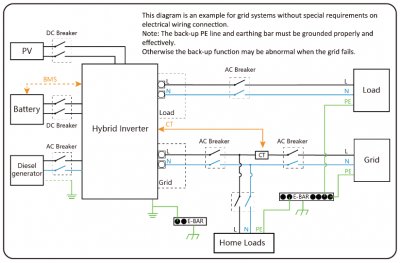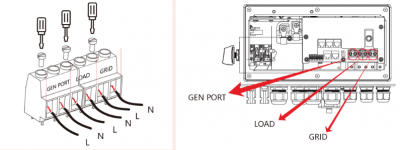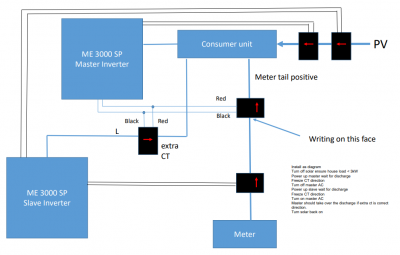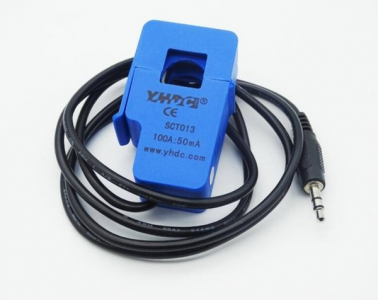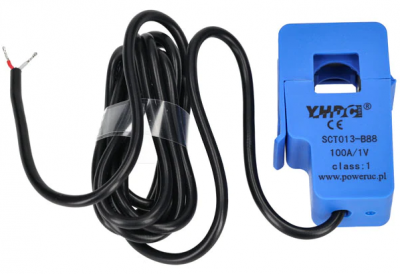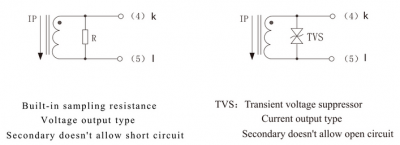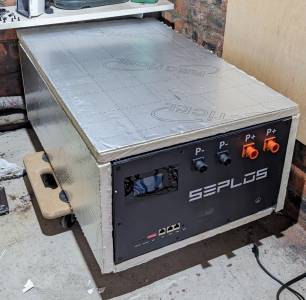I suggest you start by looking at the Sunsync Hybrid Inverters and then compare any others against that.
Sunsync have pioneered a concept of "Home Loads" which can be powered by your solar panels, whilst preventing any export to the grid.
These Home Loads are distinct from those appliances which are supplied from the inverter's Backup Load output.
A Backup Load will be powered from the storage battery in the event of a power outage, whilst the Home Loads will not.
Sunsync's zero-export credentials have been accepted by the Electrical Networks Association within the UK.
Thus you should easily obtain the required G99 approval from your regional DNO.
Note:
Sunsync is a company based in South Africa.
Their installation diagrams contain a mixture of colour codes for wiring Live, Neutral and Earth, which befit that country being referred to as "The Rainbow Nation"! 😉
To compound the problem, Sunsync inverters have three 240v AC mains connections, with their Live and Neutral wires using adjacent terminals.
Take care, and label everything!
Save energy... recycle electrons!
@transparent I've been recommended this setup for my existing hybrid inverters by someone in a group I am a member of. Any thoughts? It involves adding a third CT clamp, spliced onto the existing one to measure load
Sorry @batalto as it stands that diagram doesn't make sense to me.
1: You have PV panels connecting into a consumer unit, via two CTs in series..
Is that a DIN enclosure with DC-rated MCBs in it?
2: I don't understand how you can have two CTs wired in parallel.
The common type of mains CT (measuring current in an AC wire) produces a smaller proportional current.
The photo is a current-clamp which produces 50mA output when 100A (AC) passes through the centre square hole.
Within the instrumentation, that small current (<50mA) is connected across a resistor to produce a voltage.
The voltage is fed to an analogue to digital converter, which can then be read by the micro-controller.
Some CT's have the required resistor within the clamp itself.
They are therefore marked with a maximum voltage which will be produced at the rated max AC current.
Here are the wiring diagrams for each type
If you place two CTs in parallel, connected to the same port of the inverter, then those resistances are in parallel.
The A-to-D converter won't produce the required output.
Save energy... recycle electrons!
@batalto What is your experience of living with the Mason batteries? Have you had to perform any battery resets (e.g. the BMS got into a funny state)? I am considering getting a (vertical) Mason box for my Mother who is not at all technical, so would not be able to perform such maintenance tasks. In addition the location of the battery would be a bit tricky, so accessibility may be rather sub-optimal.
Honestly since I set them up I've not touched them at all - the only times I've turned them off was when I was messing around with the inverter and needed to make sure they were disconnected. I got the bluetooth versions so I could connected if I needed to, but I haven't. I did tweak the settings at the start for voltages/alarms, but it was a 5min job.
@chickenbig I'm not your tagged forum user but my Seplos system has been live since February this year. After the initial assembly, balancing and configuration I've had zero need to interact with it again other than checking the temperature during a cold snap (my battery is in an unheated garage). There have been no alarms/discontinuations in operation, seamlessly charging/discharging with a Solis inverter.
I would caveat this by saying that 3 months is admittedly a rather short period of time vs. the 10+ years that I hope the system to operate for.
I believe the latest Seplos BMS version comes with Bluetooth functionality which would reduce the importance of physical accessibility.
@batalto Thanks for the quick response. It is good to hear that they just work, and (in the other thread) good to see your grid usage is so low.
@korwraith Thank you for another data-point for the reliability of the system. How did the batteries cope with the cold-snap? Did you need to insulate the enclosure, or was there sufficient thermal mass (and heat generated during charge/discharge) to keep the batteries comfortable)?
Yes the bluetooth version would be handy when I visit the house. Remote monitoring would be ideal, although I suppose an internet-enabled inverter (e.g. Solis) would give some part of that.
The battery could be located behind a fridge (not ideal for access, but minimises the works needed to route cables to the inverter) or in the airing cupboard underneath the combi-boiler (not ideal from a water system failure perspective, and may hinder access to the gas meter) or finally in the garage (unheated, plus not sure where the inverter will be put, but it has plenty of room were she to want another battery). I'm not sure which to pick!
Posted by: @chickenbigI am considering getting a (vertical) Mason box for my Mother...
Really?
The Mason box is intended for Lithium cells.
It would be a bit uncomfortable for your Mother, even in vertical orientation. 😋
Save energy... recycle electrons!
Posted by: @transparentIt would be a bit uncomfortable for your Mother, even in vertical orientation. 😋
Unfortunately her balancing has been getting worse, but I think this happens with calendar ageing as well as use.
Posted by: @transparentPosted by: @chickenbigI am considering getting a (vertical) Mason box for my Mother...
Really?
The Mason box is intended for Lithium cells.
It would be a bit uncomfortable for your Mother, even in vertical orientation. 😋
Or is it that he is exchanging his mother for a vertical Mason box. 😋
Posted by: @chickenbig@korwraith Thank you for another data-point for the reliability of the system. How did the batteries cope with the cold-snap? Did you need to insulate the enclosure, or was there sufficient thermal mass (and heat generated during charge/discharge) to keep the batteries comfortable)?
The battery could be located behind a fridge (not ideal for access, but minimises the works needed to route cables to the inverter) or in the airing cupboard underneath the combi-boiler (not ideal from a water system failure perspective, and may hinder access to the gas meter) or finally in the garage (unheated, plus not sure where the inverter will be put, but it has plenty of room were she to want another battery). I'm not sure which to pick!
I added PIR insulation board to 5 of the 6 sides (attached with double-sided tape), that was enough to keep the cells above 10'C but only just. I may well add another board to the front panel of the box next winter; it's a bit more complicated as I'll have to make cut-outs for the screen/terminals but as the heat-generating BMS is directly behind that panel it should have an outsized effect vs. the other 5 sides.
I think the garage is often a good option for batteries; my garage is attached to my house so it doesn't get as cold as a detached garage which may be a consideration in your case.
(pic from a few months ago, I later added some aluminium tape along the joints to cover the gaps)
@korwraith - Could I perhaps suggest a method of insulating the front of the case which doesn't use a board covered with aluminium foil?
Also... when we say that the cells need 'balancing',
we're not expecting a 110Kg box to be left overhanging either side of wooden fulcrum! 🤣
Save energy... recycle electrons!
- 26 Forums
- 2,396 Topics
- 54.3 K Posts
- 458 Online
- 6,077 Members
Join Us!
Worth Watching
Latest Posts
-
RE: Recommended home battery inverters + regulatory matters - help requested
Thanks for the clarification.
By JamesPa , 8 minutes ago
-
RE: Considering MLCP (Multi-Layer Composite Pipe) for ASHP
OK, TBH I dont know enough about MLCP to comment with a...
By JamesPa , 21 minutes ago
-
RE: Predicted Heat Loss from MCS calcs vs EPC vs actual
My gut feeling is that the heat pump is right sized. ...
By Tim441 , 42 minutes ago
-
RE: Heat pump not reaching flow temperature
Peak Energy Products most recent accounts (to June 2024...
By JamesPa , 1 hour ago
-

RE: Power outages and storms: A surprisingly good DNO experience
Agreed, which is no more nor less than a customer shoul...
By Majordennisbloodnok , 2 hours ago
-

RE: Running from backup generaor in powercut?
@batpred In our case, 3 times each day when the Octopus...
By Toodles , 3 hours ago
-
RE: Advice for a novice on Mitsubishi Ecodan 6kW
Hi @sheriff-fatman Cycling at 5C and below is usuall...
By RobS , 3 hours ago
-
RE: New Fogstar 15.5kWh upright solution
@batpred Here's the latest Fogstar ready built pack....
By Bash , 5 hours ago
-
RE: RDSAP10 effect on existing heat pump EPC rating?
@mike-patrick yes, even though the current system is ru...
By Tim441 , 5 hours ago
-
RE: Solis inverters S6-EH1P: pros and cons and battery options
Solis confirmed that the S6 works with a single battery...
By Batpred , 5 hours ago
-
RE: Who has a V2G EV installation
I am wondering if in any V2X, would the car battery eve...
By Batpred , 6 hours ago
-

RE: Setback savings - fact or fiction?
Yes, by calculating it manually from the minute data, w...
By cathodeRay , 7 hours ago
-
Fan unit Making terrible noise HELP!!
One of a pair of fan units on an Earth Save Classic II ...
By GutoFfowc , 8 hours ago
-
RE: New Mitsubishi Ecodan 11.2kW installation - L9 errors and maybe more
OK. I think your system, which seems well designed, is...
By JamesPa , 9 hours ago
-

RE: Heatpunk Floor plan issues
It's usually the complete opposite... seldom that Safar...
By Mars , 23 hours ago
-

RE: Fan is clipping ice build up from the front of unit.
@majordennisbloodnok I’ll not go there thanks! Toodles.
By Toodles , 1 day ago
-
RE: Running my new Nibe ASHP efficiently
I'm new to the forum. Did you get a reply to this last ...
By Mike @ Camelot , 1 day ago
-

RE: ASHP Energy Consumption: Aira 12kW heat pump
@grantmethestrength MCS requirements for DHW capacity h...
By Toodles , 1 day ago
-
RE: Help me keep the faith with my air source heat pump installation
@adamk I'm observing my own system at low temperatures ...
By dr_dongle , 1 day ago

